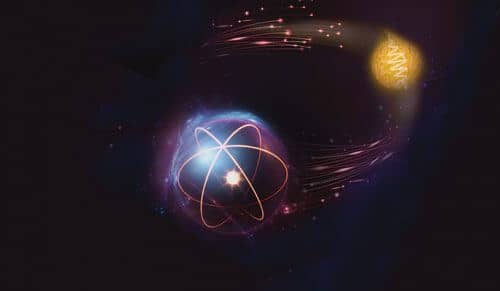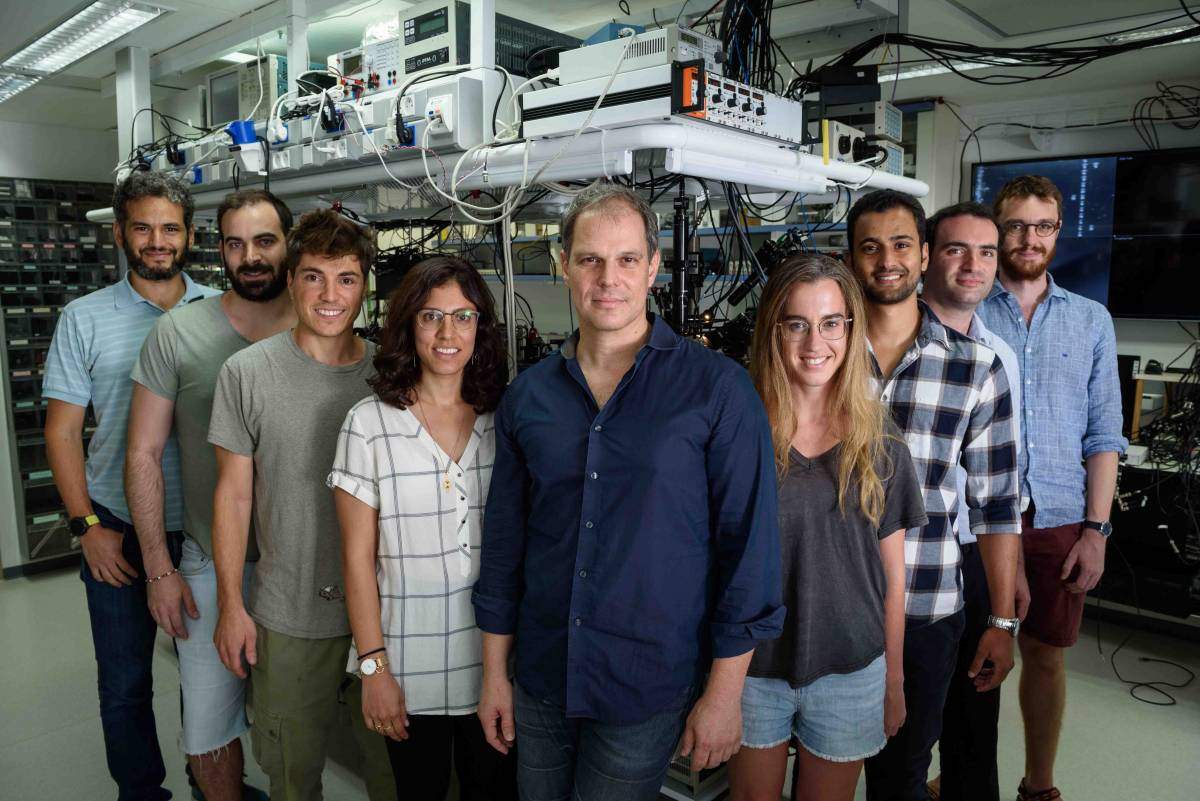Prof. Barak Dayan's laboratory at the Weizmann Institute of Science is one of the few laboratories in the world that was established with the aim of developing and finding a solution to this challenge. The scientists of this laboratory have recently taken a significant step towards the development of such a communication system

We do not know what a quantum computer will look like, and how exactly it will work, but nevertheless, such a computer is a kind of holy grail that stands at the center of the ambitions of scientists in many laboratories around the world. The benefit that could be derived from such a computer is so great that it justifies the effort and dealing with the uncertainty. Quantum computers will be able to perform calculations that cannot be performed on ordinary computers, such as decomposing a very large number, created as a product of two prime numbers, into its components. Such an ability means the possibility of cracking information encrypted in the most common and reliable encryption systems that exist today, and which are used for economic, security and private communications.
The great advantage of the quantum computer, and the difficulty in building it, stem from the fundamental difference between bits of a normal computer and quantum bits. A normal bit is a kind of switch that is at any given moment in one of two possible states (for example, "off" and "on"), which can be described by the digits zero (0) and one (1), respectively. On the other hand, a quantum bit ("qubit") can be simultaneously in both "zero" and "one" (a state called "superposition") - or in any other combination of the two states. Therefore, it will be able to perform many calculations at the same time. This ability stems from one of the basic properties that quantum theory attributes to both matter and light: the dual existence as particles and waves. In the world of big things, classical physics rules, according to which objects seem to be located in definite places. But in the world of small things, such as atoms and photons (particles of light), quantum theory reveals the surprising and strange side of nature: everything, even particles, is controlled by waves that can be found in several places at the same time. For example, atoms, electrons and photons can move simultaneously in several possible paths - as long as no factor observes or measures them. As soon as someone or something watches them - the double (parallel) existence collapses, and the universe "chooses" only one path. This is, in a sense, the essence of the difficulty in building a quantum bit. On the one hand we want to enjoy the parallelism of its existence, and for that we need to isolate it from any contact with the environment. On the other hand, if you want to change its state (for example, turn a state of "zero" into a "one" and vice versa), or perform a calculation using it, you must interact with it, and then it may collapse into its particle instance, and lose its wave property and parallel existence.
In various laboratories around the world, scientists are working on the development of various types of quantum bits. Some companies even announced that they were able to develop systems that include several dozen such bits. But in order to develop a quantum computer that can solve problems that normal computers cannot solve, millions of quantum bits are needed, which will manage extensive communication between them. Quantum communication between different systems means, almost necessarily, the "translation" of the qubit into a light impulse (pulse) of a single photon, which can be sent through an optical fiber from one group of qubits to another. The development of such communication is a difficult scientific and technological challenge which constitutes one of the main bottlenecks on the way to increasing the quantum computing systems that exist today.

the laboratory of Prof. Barak Dayan At the Weizmann Institute of Science, it is one of the few laboratories in the world that was established with the aim of developing and finding a solution to this challenge. The scientists of this laboratory have recently taken a significant step towards the development of such a communication system. "The calculation power of a quantum computer comes from the fact that it activates many qubits at the same time, each of which is in a state of superposition - and they communicate with each other," says Prof. Dayan. In order to advance this possibility, Prof. Dayan and his group members, in a previous study, developed a way that allows to "tear off" a single photon from a flash of light. This demonstration is of great significance as single photons are expected to form the backbone of future quantum communication systems. In the new study which Published in the current issue of the scientific journal Nature physics, Prof. Dayan and his group members succeeded in creating - for the first time - a logic gate that allows a photon and an atom to exchange the information (the qubit) they carry.
"In the experiment, we demonstrated how it is possible to launch a single photon carrying a message, that is, one qubit," says Prof. Dayan, "and as soon as it reaches a material qubit - which in our case is an atom - it automatically transfers the information it carries to it, and takes the information that was stored in its place Batum, and continues on his way. That is, it is a simultaneous and automatic process of reading and writing - which is the only way allowed by quantum theory, in which it is forbidden to duplicate or delete information, but only to transfer it from one place to another.'
This system, which is actually the SWAP logic gate between a photon and an atom, is the first demonstration in the world of such a gate, which is the most natural basis for efficient quantum communication. Since the gate happens passively and automatically there is no need to manage it from the outside, so it is particularly suitable for creating large quantum communication networks - a kind of quantum equivalent of digital circuits (VLSI). "Since the gate we demonstrated is relevant to photonic communication between all types of material qubits, and not just between atoms," says Prof. Dayan, "we hope and believe that it will be widely used in the next generation of quantum computing systems in the world."

3 תגובות
Yonatu Goren
In my opinion, the reason is that an atom is also a quantum system. Collapse happens in interaction with classical systems.
Jonathan Goren
In my understanding - "collapse" happens in interaction with the macroscopic world. For the purpose here, an atom is a quantum particle.
How is it that the quantum information does not collapse when it interacts with the atom that reads it and actually measures it?